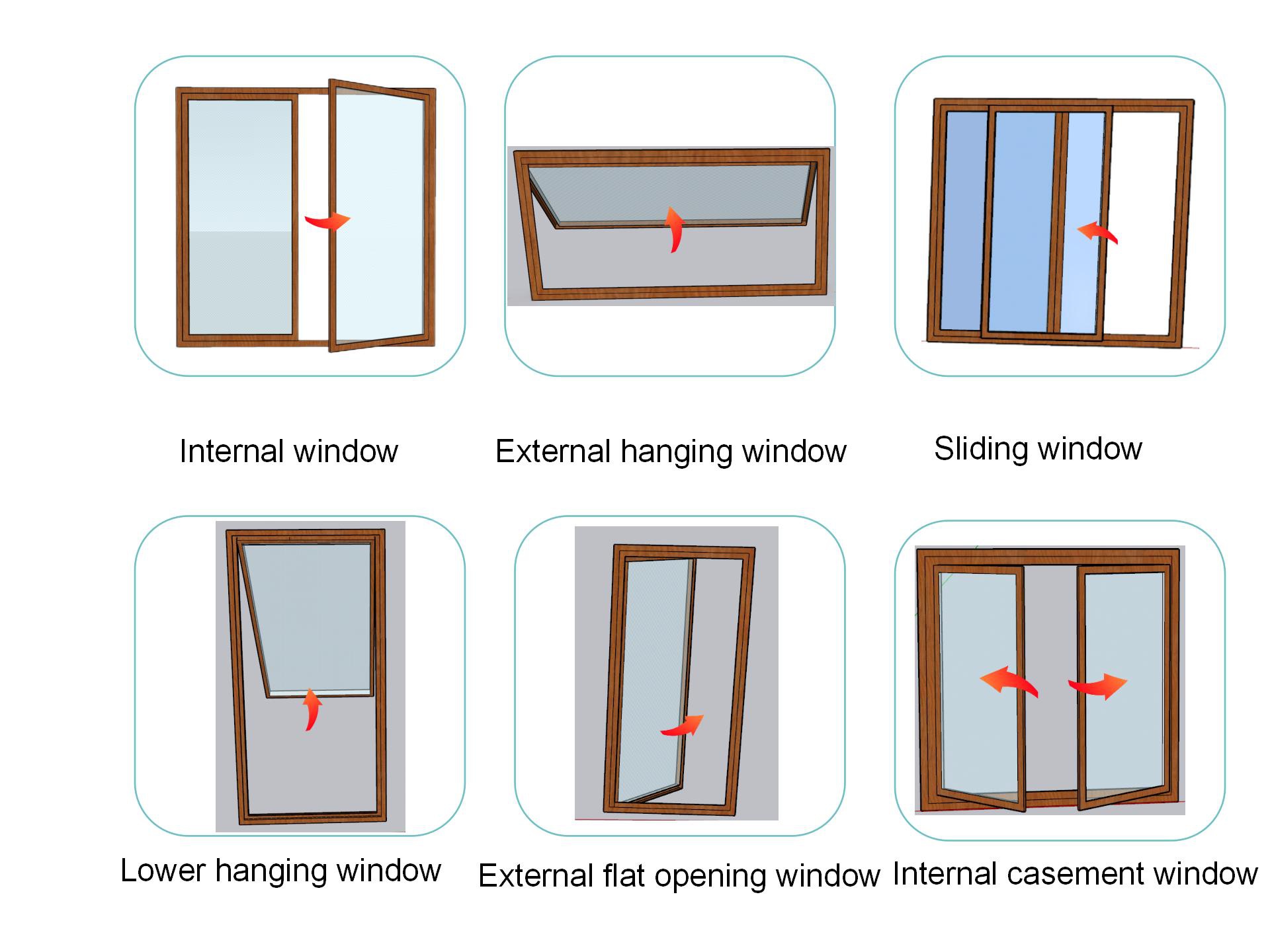-
Call us : 13892577701
-
Email : huoshiliu2024@163.com
Call us : 13892577701
Email : huoshiliu2024@163.com

Windows are an essential part of any building, serving as a gateway to light, air, and a connection to the outside world. However, with advancements in building materials and technology, the simple act of opening a window has evolved into a range of sophisticated options. Each type of window-opening method not only enhances functionality but also plays a significant role in energy efficiency, safety, and aesthetics. Here, we explore the various ways to open windows and their unique benefits.
1. Casement Windows
Casement windows are among the most traditional and popular types of windows. Hinged at the side, they swing outward like a door and are typically operated using a crank handle.
Advantages:
Provides excellent ventilation as the entire window opens.
Offers a tight seal for better thermal insulation.
Easy to operate and clean.
Casement windows are ideal for spaces where unobstructed views and maximum airflow are priorities, such as living rooms or kitchens.
2. Sliding Windows
Sliding windows glide horizontally along a track, making them a space-saving solution for modern designs.
Advantages:
Simple operation with minimal effort.
No interference with indoor or outdoor spaces.
Sleek and contemporary aesthetic.
These windows are often found in areas like balconies, offices, or any room where space efficiency and modern styling are important.
3. Tilt-and-Turn Windows
Tilt-and-turn windows are a versatile choice, allowing for two distinct opening mechanisms. They can tilt inward at the top for ventilation or swing inward like a casement window.
Advantages:
Dual functionality provides flexibility for ventilation or cleaning.
Excellent for energy efficiency and security.
Modern, stylish design fits well with contemporary architecture.
This innovative design is commonly used in bedrooms, study rooms, or spaces requiring high safety standards.
4. Electric Opening Windows
With the rise of smart building technologies, electric opening windows are becoming increasingly popular. These windows can be operated via remote control, wall switches, or even mobile apps.
Advantages:
Convenient and suitable for hard-to-reach areas.
Can be integrated with smart home systems.
Enhances modern architectural designs.
Electric windows are often seen in large-scale projects like shopping malls, high-rise buildings, or luxury homes where automation and convenience are prioritized.
5. Awning Windows
Awning windows are hinged at the top and open outward, resembling an awning when opened. They are an excellent choice for areas prone to rain.
Advantages:
Allows ventilation even during bad weather.
Protects the interior from rain.
Often paired with larger windows for additional functionality.
These windows are suitable for bathrooms, basements, or areas where ventilation is crucial.
6. Fixed Windows
Although fixed windows do not open, they are worth mentioning due to their aesthetic and functional contributions. These windows provide unobstructed views and allow natural light to flood the interior.
Advantages:
Enhances architectural beauty.
Low maintenance and energy-efficient.
Often used in combination with operable windows.
Fixed windows are perfect for large glass, living rooms, or commercial spaces.
At Reach beyond, we specialize in producing high-performance windows tailored to various architectural needs. From smart windows to thermal insulation doors and windows, our products combine advanced engineering with aesthetic appeal to elevate your spaces.
